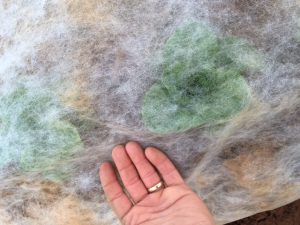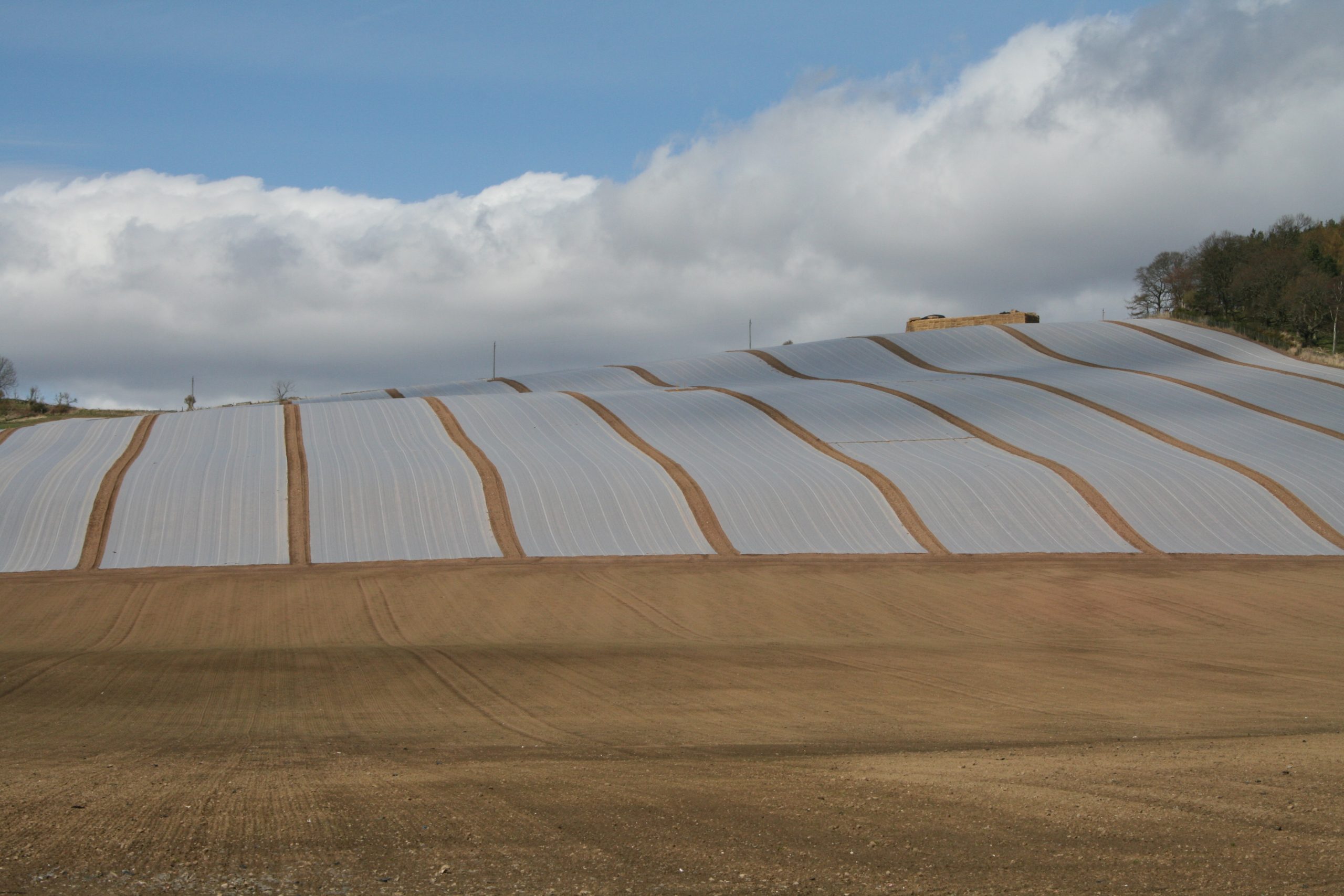An Investigation of Low-Cost Protective Cropping
Project VG13075 was undertaken by Applied Horticultural Research. The project ended in 2019.
Major findings
Project VG13075 aimed to evaluate a range of low-cost protected cropping options and demonstrate each method’s suitability for use by vegetable growers. The project found that there are benefits and drawbacks to the three low-cost protection methods investigated – shade structures, wind breaks, and floating row covers – and that this differs by weather and crop type.
“Under cold conditions, floating row covers made with fleece can provide major benefits, including protection from frosts or, in warmer regions, improved germination and growth during the winter months,” a member of the project team, Adam Goldwater, said.
Floating row covers of the netted type had the potential to improve yield and quality during the summer months. Plant growth was often enhanced, sunburn prevented, and temperatures reduced. Netted covers were also able to protect capsicum and chilli crops from Queensland fruit fly. In terms of shade structure, netted shade structures were found to protect crops from sunburn and to reduce moisture stress.
However, Mr Goldwater noted that the same level of shading is not necessarily appropriate for all crops, or for use at all times of the day or year. In contrast, retractable roof structures can manage ventilation and shading to keep plants within an optimal environment at all times.
The project found that capsicums grown under a retractable roof structure were significantly larger and healthier than those grown outside. One surprising finding that Mr Goldwater advised growers to be aware of was that, in some cases, floating row covers – which were marketed for protection against insect pests – actually increased pest populations.
“The very fine meshed nets allowed populations of aphids to rapidly increase. This is likely the result of the fine mesh acting as a physical and visual barrier against predators and parasitoids,” Mr Goldwater said.
The project team first reviewed numerous low-cost protective methods and determined that those with the most potential were shade structures, wind breaks and floating row covers. These three options were then field tested on a large number of growing sites around Australia.
“Trials were conducted in many of the major centres for vegetable production, including Carnarvon, Darwin, Tolga, Bundaberg, Stanthorpe, Sydney basin, Robinvale, Bairnsdale, Werribee and Adelaide Hills,” Mr Goldwater said.
“Common crops in those regions were selected for testing with the protective options, across a range of seasons during which adverse weather conditions were likely to affect production. Both leafy and fruiting vegetable crops were evaluated.”
At harvest, yield and quality were evaluated, both for crops within and outside the protected areas. Insect populations were estimated, and in some cases, storage life was assessed.

Recommendations
Based on these findings, Mr Goldwater made several recommendations to growers.
“Floating row covers are most useful for crops that do not require regular access. Sprays and irrigation can penetrate the covers, but regular removal for harvest or other crop work is impractical,” he said.
“Frost cloths work best on low-growing, leafy crops when the weather is cold. The results from this project can certainly help growers produce out of season, bring in a crop earlier, or perhaps just act as ‘insurance’ against cold weather events. The lightest fabrics, which are also the cheapest, were sufficiently durable and gave results as good as, or better than, the more heavyweight fleeces.”
Mr Goldwater also noted that further research is needed in several areas. Firstly, to address issues with re-use or recycling of floating covers, as none of the materials tested were biodegradable, and most were unusable after several crops.
Secondly, further investigation into the use of fleece materials is necessary. This is to determine the responses of different crops, temperature limits for effective use and how to optimise application time. Additionally, the impact of floating row covers and shade materials on pest management practices also needs to be investigated.
Background
Increased climate variability is a major threat to the Australian vegetable industry, as identified in a review by Applied Horticultural Research (VG12041).
Extreme weather events such as heatwaves, heavy rain, unseasonal frosts and hail can cause significant damage to crops, resulting in reduced quality or even total crop write-off.
Technological solutions such as hightech greenhouses can be used to protect crops, providing a level of control and certainty. However, such solutions are costly and, for many vegetable crops, are not justified by the returns.
Further information
The project report, trial results and a fact sheet entitled Blankets for vegetables: Using frost cloth to protect plants from weather are available on the AHR website.
The final report can be found on the InfoVeg database.
For more details, please contact Adam Goldwater at adam.goldwater@ahr.com.au or Gordon Rogers at gordon@ahr.com.au, or call the AHR office on (02) 8627 1040.
This article first appeared in Vegenotes 76 – Autumn 2020. You can download the publication here.

